Affiliate links on Android Authority may earn us a commission. Learn more.
Apple A16 Bionic: What to know about the iPhone 14 Pro and iPhone 15 chip
Apple launched the iPhone 14 series in late 2022, and the Pro models got the lion’s share of upgrades. Expect 48MP main cameras, display cutouts instead of a notch, and telephoto cameras. However, another notable upgrade is the A16 Bionic chipset.
So what exactly is this processor? How does it compare to rival Android SoCs? What makes it stand out? We answer all this and more in our Apple A16 Bionic guide.
What is the A16 Bionic?
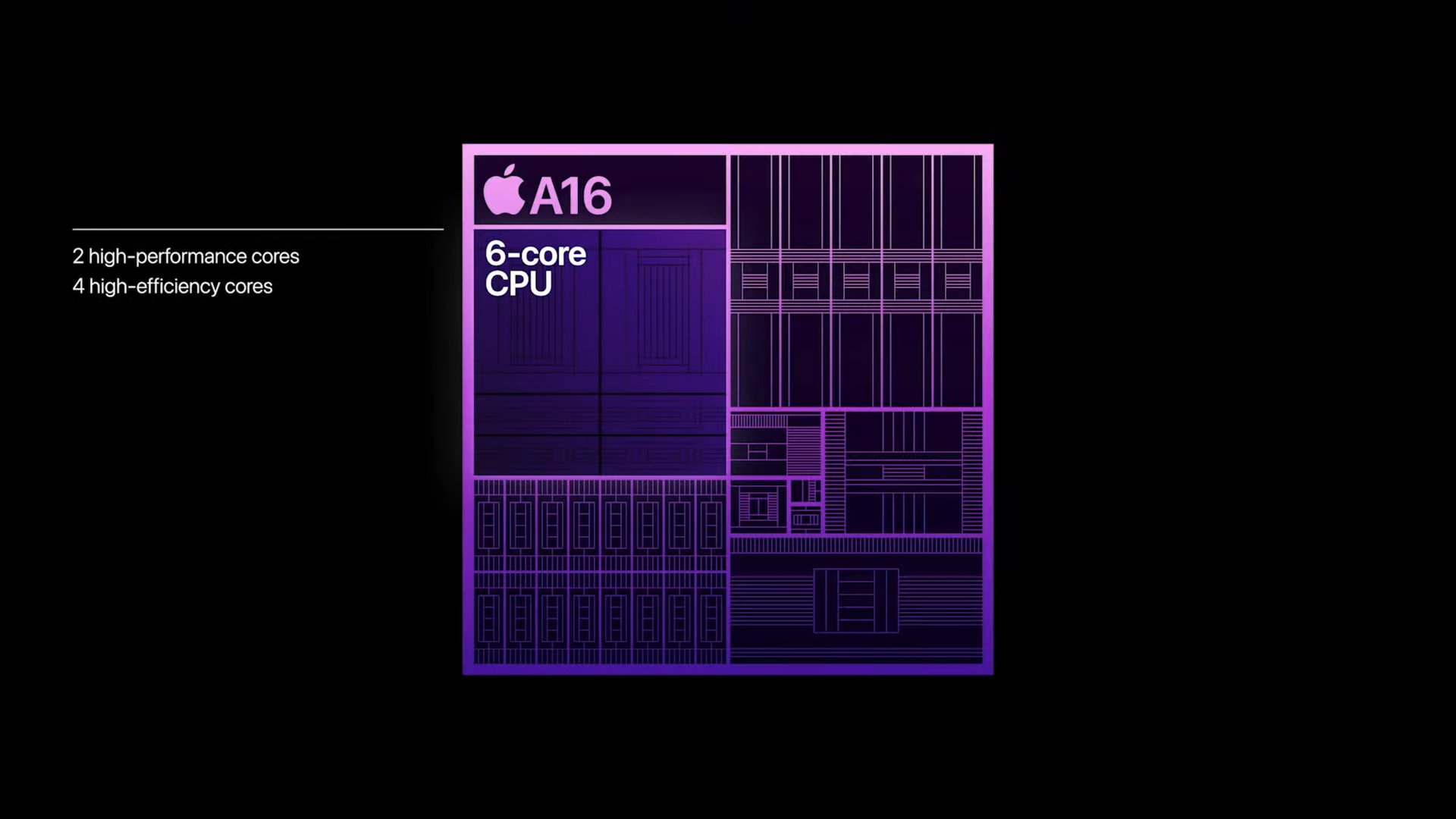
The A16 is Apple’s 2022 chipset, debuting inside the iPhone 14 Pro and iPhone 14 Pro Max.
As for the basic specs, the processor is manufactured on a 4nm TSMC process and brings a hexa-core CPU (two performance cores and four efficiency cores) and a five-core GPU.
Other notable features include a 16-core “Neural Engine” for machine learning tasks as well as a Qualcomm modem for sub-6GHz and mmWave 5G connectivity.
It’s worth noting that Apple has since debuted the A17 series of chips, landing inside the iPhone 15 Pro range. But the standard iPhone 15 and iPhone 15 Plus still use the A16 SoC.
A16 Bionic: How does it compare to Android rivals?
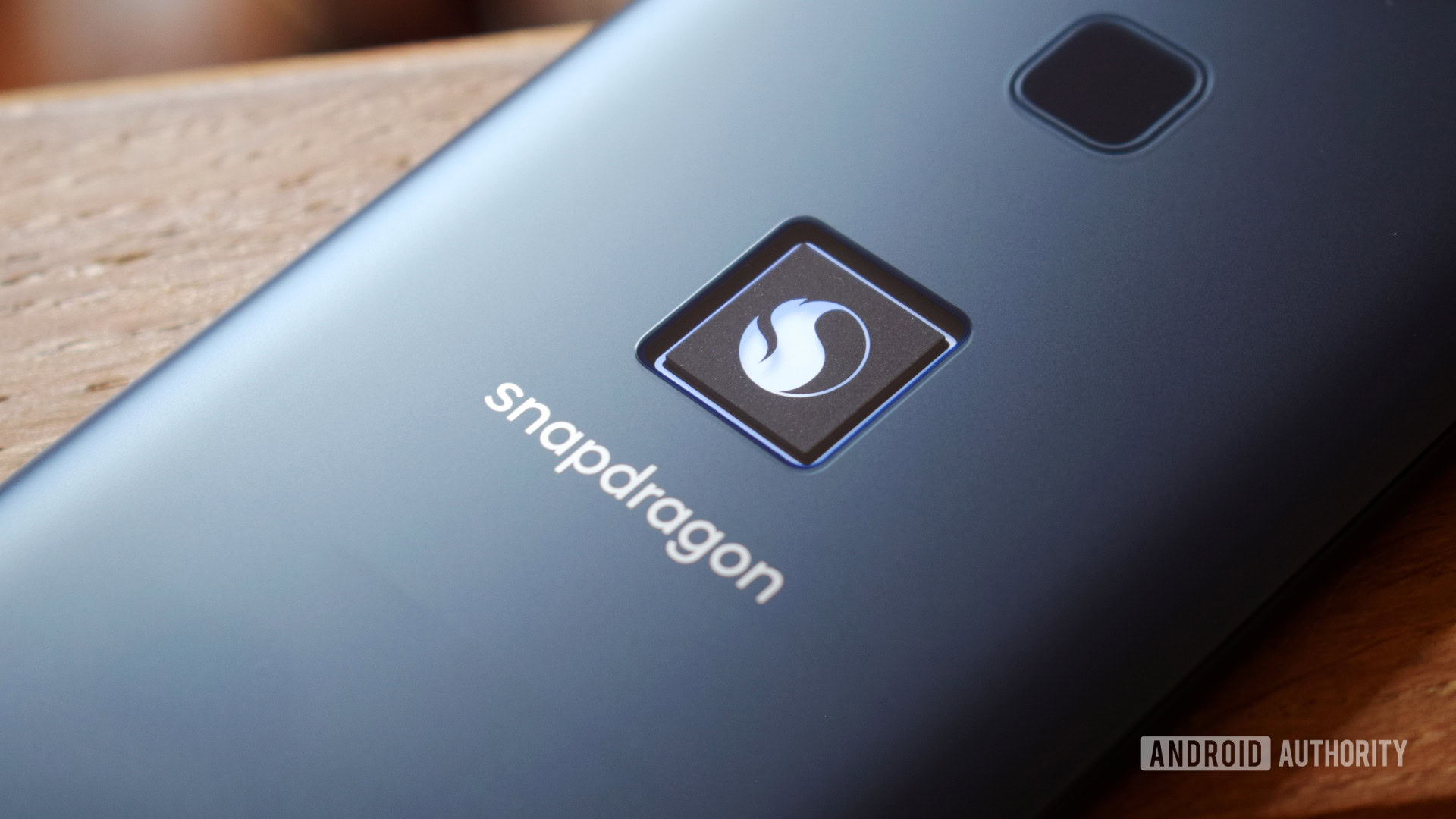
Apple’s smartphone processors have traditionally been better than the best Android chipsets, usually delivering superior CPU and GPU performance.
Our own test results indeed show that the Apple A16 Bionic achieved noticeably better single-core and multi-core CPU performance compared to the Snapdragon 8 Gen 2, Snapdragon 8 Gen 1, and Tensor G2 chipsets. In fact, there was a massive gulf in performance between Apple’s chip and the last-placed Tensor G2.
However, once-off 3DMark Wild Life results show that all the listed Snapdragon 8 Gen 2 phones handily outperformed the A16 Bionic when it came to graphical performance. The Snapdragon 8 Gen 1-equipped S22 Ultra was also nipping at Apple’s chipset. The Exynos 2200-powered S22 Ultra was pretty far behind, though.
Unfortunately, the Tensor G2 was way behind the A16 Bionic and rival Android chips when it came to graphical performance. This is at least partially due to Google using older CPU and GPU tech in this chip. But the chipset also brings AI silicon that enables features like offline dictation, Magic Eraser, face unblur tech, and more.
The Apple A16 Bionic is a mild performance upgrade at best over the A15, but it's still very capable.
Apple’s vague CPU performance graph at the iPhone 14 series launch (seen below) didn’t show the A15 Bionic. That fueled suggestions that the A16 Bionic wasn’t a big upgrade over its predecessor. Sure enough, our benchmark figures show similar single-core CPU results, although we do see a notable multi-core leap.
The A16 Bionic outperforms the older Apple chip when it comes to GPU results too, but this is a pretty small advantage.
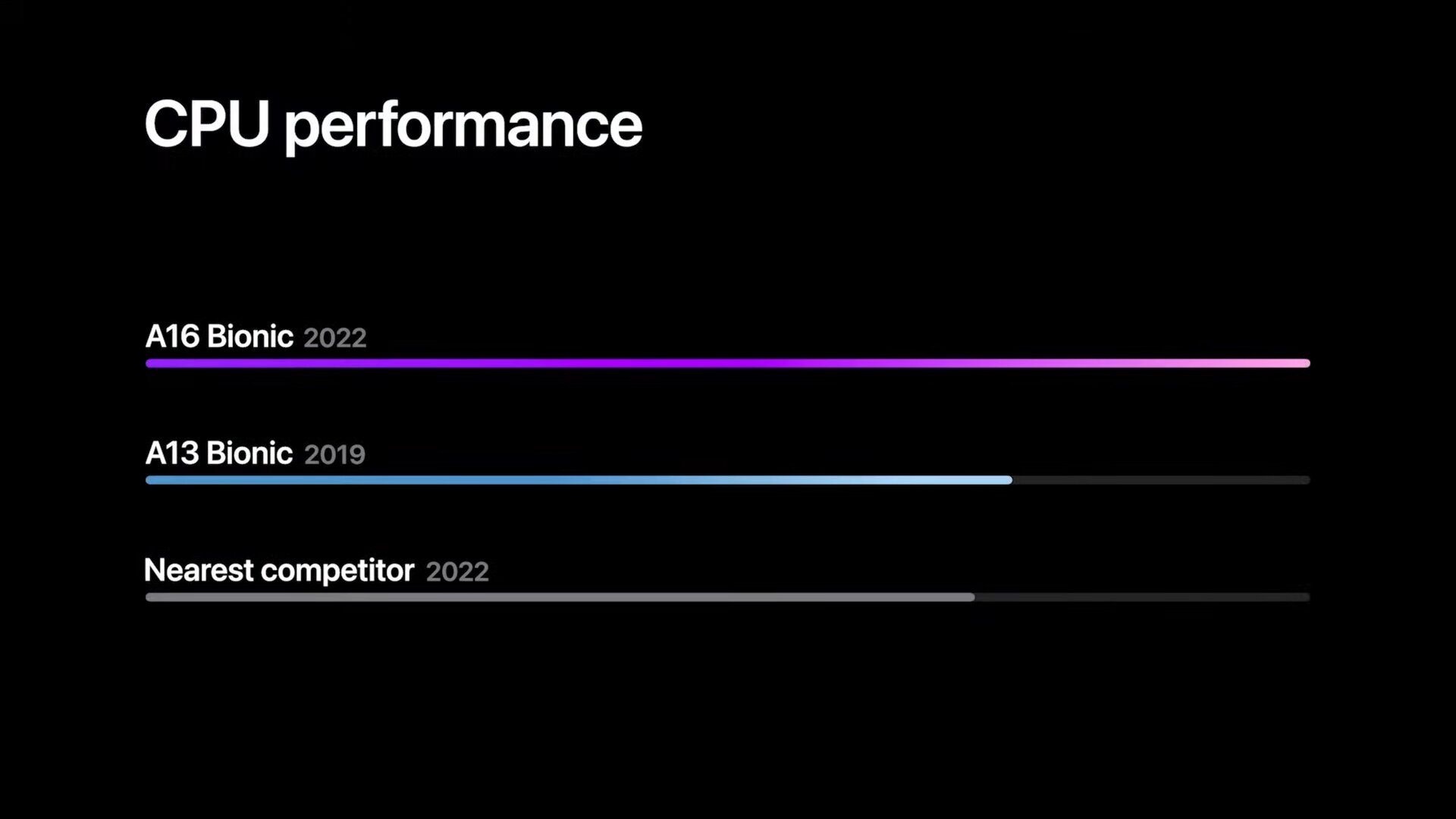
Either way, it’s clear that Apple’s 2022 chipset still held a significant CPU advantage over Android rivals. But these same rivals have a clear edge when it comes to GPU performance.
How efficient is the A16 Bionic?
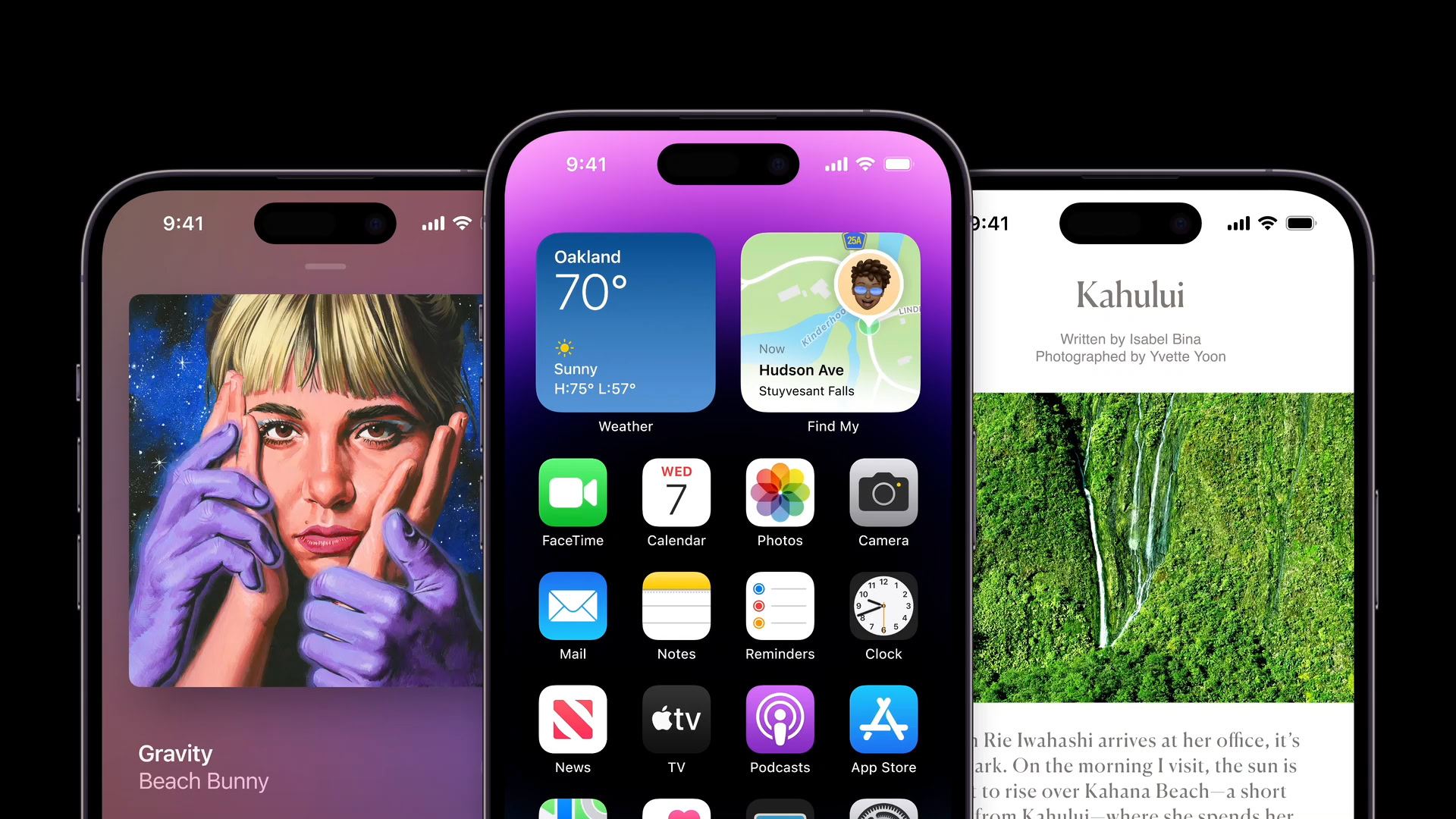
Apple made a point of talking about the new chipset’s power efficiency. It says that the A16 Bionic’s performance CPU cores consume 20% less power than before.
The iPhone maker adds that the efficiency CPU cores consume one-third of the power of rivals. We’re guessing this is compared to the Arm Cortex-A510 seen in 2022’s Snapdragon 8 Gen 1 series, Samsung Exynos 2200, and MediaTek Dimensity 9000.
In other words, Apple can continue to get away with using smaller batteries in its iPhones compared to Android devices. These chips combined with iOS are simply delivering more efficiency than Android phones.
Supported phones
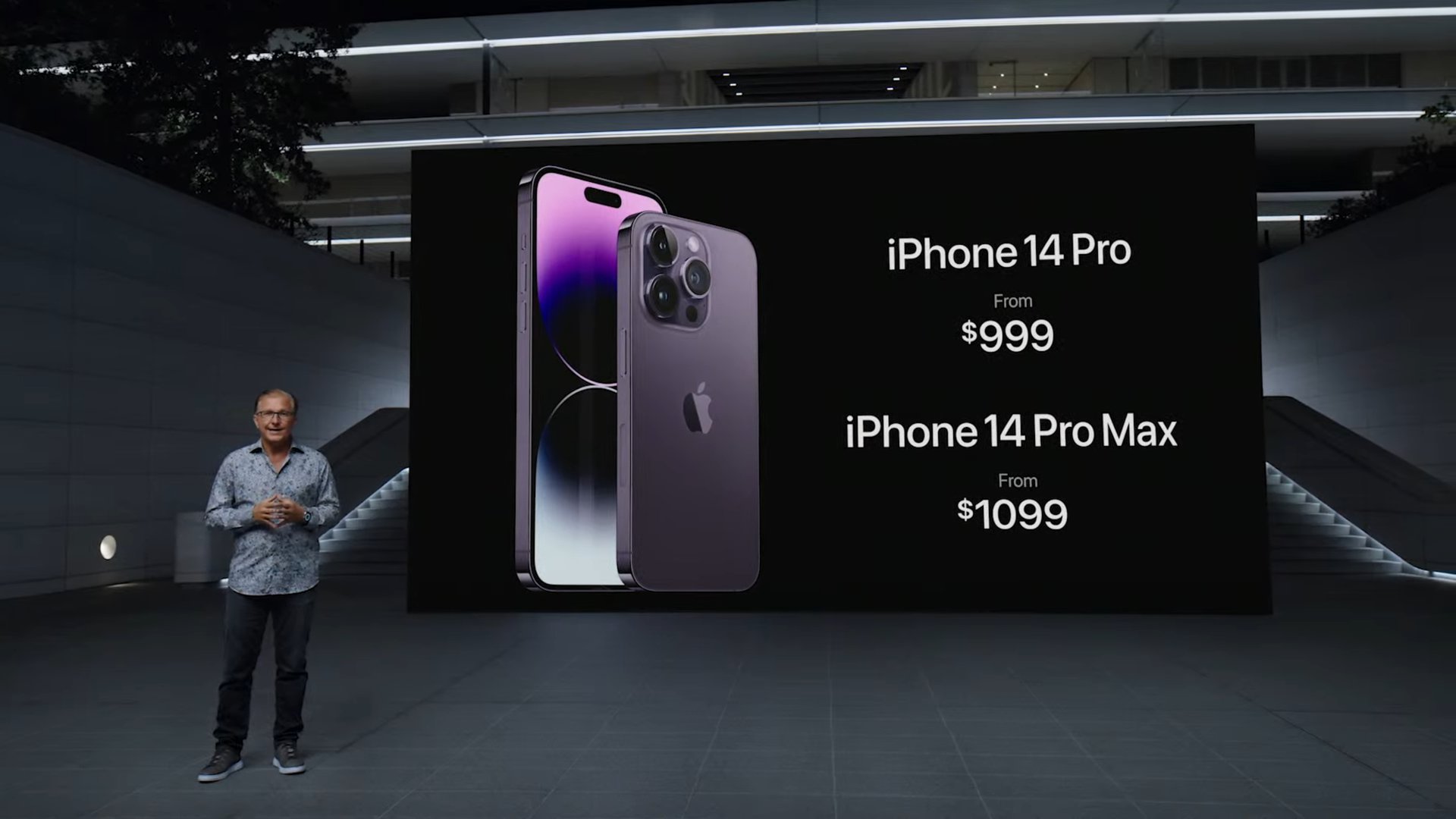
Apple’s smartphone chipsets are exclusive to iPhones, and the A16 Bionic is no exception. However, the new processor doesn’t appear in all iPhone models.
Instead, Apple is only bringing the A16 Bionic to the iPhone 14 Pro and iPhone 14 Pro Max. The standard iPhone 14 and iPhone 14 Plus stick with the previous A15 Bionic chipset.
Apple offered a similar strategy in 2023 when it decided to bring the A16 Bionic to the iPhone 15 and iPhone 15 Plus. Meanwhile, the iPhone 15 Pro and Pro Max got the A17 Pro, which delivered ray-tracing graphics and a smaller manufacturing process for better efficiency.